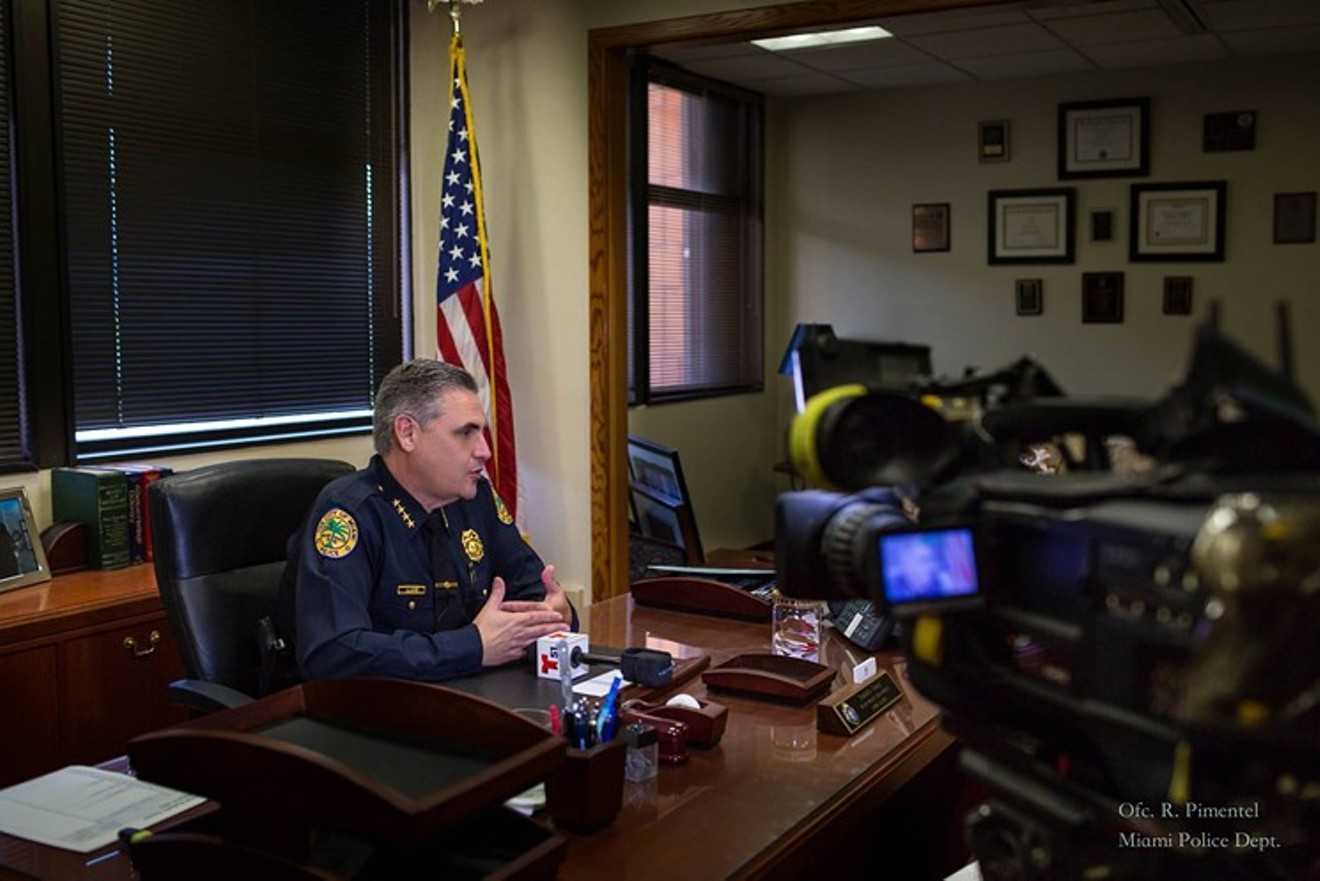But according to documents New Times obtained this week, Diaz wasn't reprimanded for his actions until this past August — more than six years after he lit up a silver Mercedes-Benz E350 with his department-issued MP5 submachine gun. The department has now suspended the cop for 16 days, though he's appealing the ruling.
So why did it take so long to suspend him for breaking departmental policies? Police Chief Rodolfo Llanes said the gap is due to the actions of local prosecutors; he says his internal affairs department was hamstrung until State Attorney Katherine Fernandez Rundle decided whether to charge Diaz with a crime.
"We received declination of prosecution from the State Attorney on 9/12/2016," Llanes tells New Times in a text message. He says MPD moved relatively quickly after that. By March, internal affairs finished its investigation and presented its case before MPD's Firearms Review Board, which judges whether cops fired their guns legally.
"Discipline was issued after that based on board findings," Llanes says. (A spokesperson for Rundle's office didn't immediately respond to a message about the case.)
This case is actually Diaz's second controversial shooting incident. Prosecutors declined to charge him with a crime when he and a team of fellow cops fired 27 bullets
That killing came amid a wave of intense scrutiny for MPD after its cops fatally shot seven black men in just eight months, later causing the U.S. Department of Justice to open an investigation into the department in April 2011. Diaz's second shooting — when he fired into the moving car — occurred three months later, but he was not suspended for the incident until this year.
The latest case illustrates how the ongoing police-shooting backlog at Rundle's office
Local defense attorneys, justice advocates, and even police chiefs have complained about the backlog, which has existed for the majority of this decade. As long as a case remains open, prosecutors typically prevent lawyers or IA investigators from speaking to witnesses or obtaining evidence from the case file.
Slightly more than a month after New Times published its story, Rundle's office closed a shooting case that had hung open since 2009 and announced it would become more transparent and publish investigation information online. But Diaz's case is another example of a police-shooting probe stretching on for years.
According to police disciplinary documents, the trouble began July 18, 2011, when Miami-Dade County Police located what they said was a stolen Mercedes sitting outside Club Space. MDPD asked City of Miami cops for help, and Diaz, along with two other MPD officers, arrived. At roughly 3 a.m., "three male subjects" approached the vehicle. One of the officers immediately arrested a suspect, but the other two jumped into the car and sped off.
Police documents claim the drivers pointed the Mercedes "in the direction of" the cops "at a high rate of speed." But bullet markings suggest Diaz didn't fire until the car had passed him. Police documents say his shots hit the "side and rear" of the "fleeing vehicle." An unarmed suspect in the passenger seat was shot in the leg.
According to news reports at the time, the car ended up crashing head-on into a wall.
"The front of a silver-gray Mercedes-Benz E350 was buried halfway inside a vacant building at Northwest Seventh Avenue and 20th Street — back tires off the ground as it went airborne, straight in," the Miami Herald wrote the following day. "The impact cracked the pavement along the curb and left a gaping hole in the building’s side."
It's unclear whether the car crashed because Diaz shot at the driver, but the outcome is exactly why MPD bars its cops from firing at moving vehicles.
At the time, MPD declined to tell reporters why Diaz had fired his gun or whether the "non-life-threatening injury" one of the suspects sustained was the result of a police shooting. The documents now make it clear that it was.
For reasons currently unknown, the case then hung open at Rundle's office for the next five years, until September 2016. Chief Llanes says his IA officers couldn't take the case until Rundle's office wrapped up its investigation.
On March 6 — after Rundle finally decided not to charge Diaz — the Firearms Review Board came down on the cop, ruling that his shooting violated clearly written departmental policy.
"Officer George Diaz had a reasonable amount of time to remove himself from the moving vehicle's path," disciplinary documents state. MPD issued Diaz a formal reprimand in May. Llanes then ordered him suspended without pay for 16 nonconsecutive days beginning August 6.
Llanes says he "believes" Diaz is in the process of appealing the ruling.












